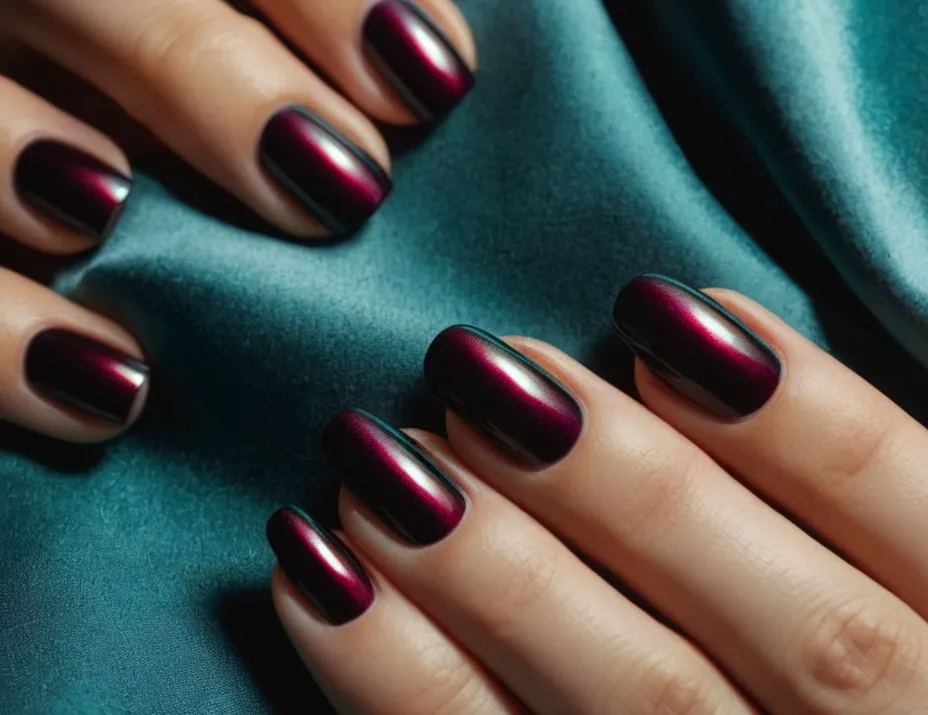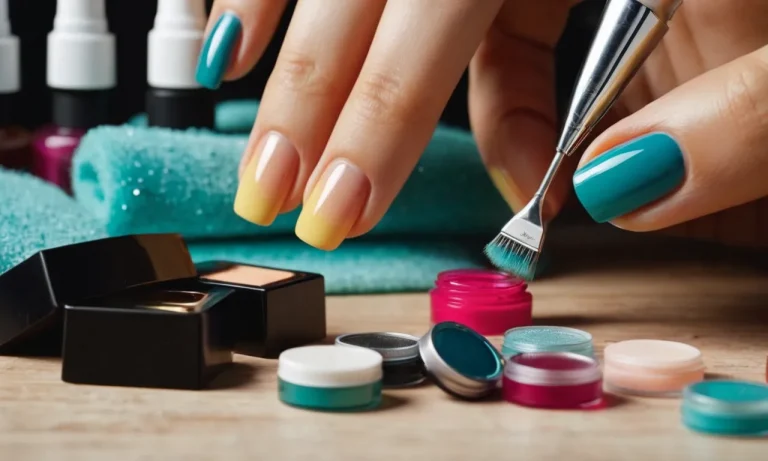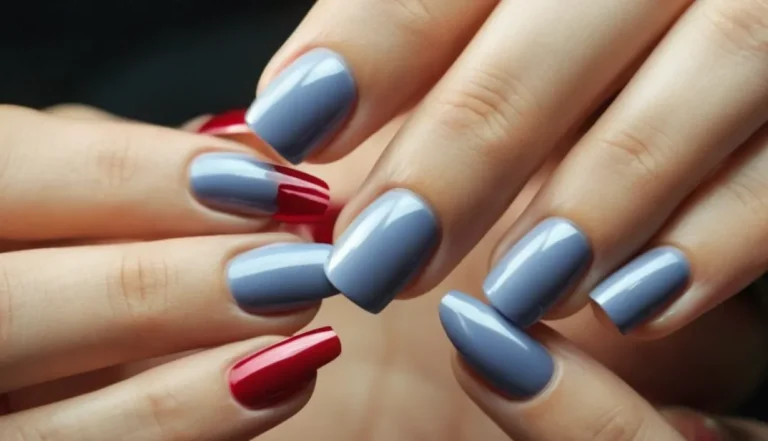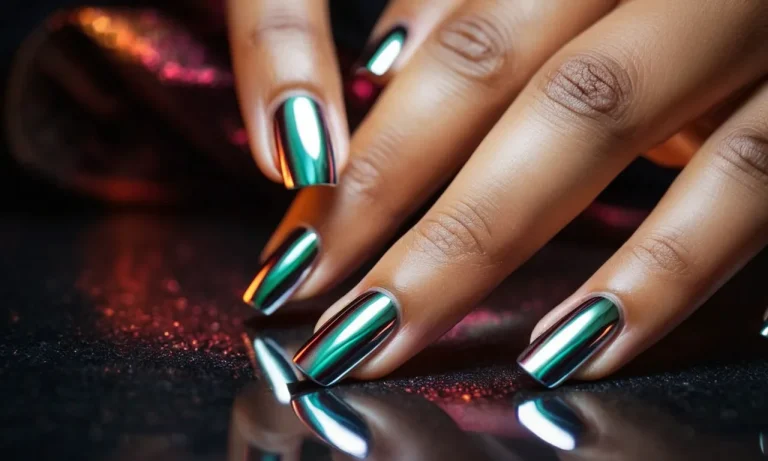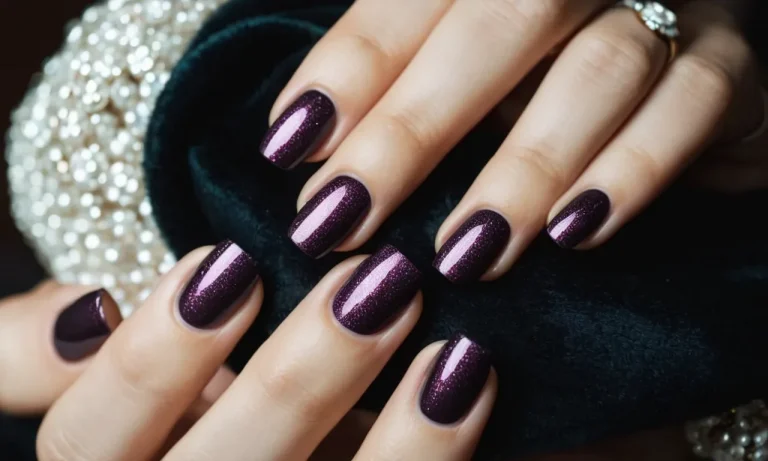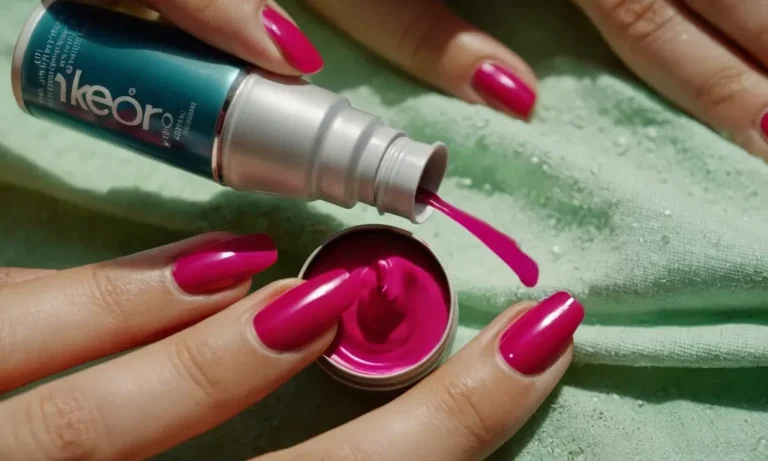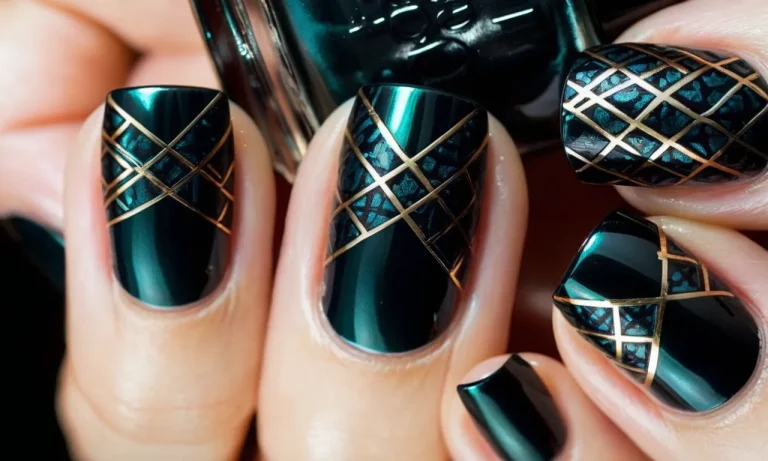How Many Fills Before You Need A New Set Of Nails?
If you just got a fresh set of acrylic or gel nails, you’re probably wondering how long they’ll last before needing a fill or replacement. With proper at-home care between salon visits, a quality set can last 4-6 weeks or more.
If you’re short on time, here’s a quick answer to your question: Most manicurists recommend getting a nail fill every 2-3 weeks to maintain the look and health of enhancements like acrylics or gels. After 2-3 months and 2-5 fills, it’s best to remove the product and start fresh with a new set.
In this comprehensive guide, we’ll cover everything you need to know about the lifespan of sculpted nails, including average fill schedules, signs it’s time for a new set, removal risks, and tips for making each application last as long as possible.
What Factors Determine How Long Nails Last Between Fills?
Nail Product Type and Application Method
The type of artificial nail product used and the application technique influence longevity. Acrylic and dip powder nails tend to last 2-3 weeks between fills, while gel polish and gel extensions can go 3-4 weeks. Careful application and shaping creates a smooth surface so nails don’t catch and break.
Using nail dehydrator and pH-balanced primers before application also improves how long enhancements last.
Nail Length and Shape
Shorter nail lengths, especially with rounded edges, make nails less prone to breaking and lifting between appointments. Stiletto, coffin, or square shapes are higher-maintenance. Keeping free edges under 1⁄4 inch long reduces pressure and leverage against the nail plate.
Any extra length past the fingertip multiplies the chance of trauma and damage in daily use.
At-Home Care and Maintenance
Proper at-home care maintains structural integrity and cosmetic appearance between fills. Using cuticle oil daily hydrates the nail plate and eponychium. Filing down small chips and wrapping or patching loose edges prevents further lifting or cracking.
Avoid picking, peeling, or forcefully tearing off enhancements. Water exposure should be limited by wearing gloves and thoroughly drying hands. Using additional nail hardeners or treatments fills in cracks and flaws.
Lifestyle and Activities
Exposure to water, cleaning chemicals, and physical trauma shortens the lifespan of nail enhancements. Frequent handwashing or dishwashing causes moisture damage. Gardening, sports, housework, and similar tasks subject nails to bending and blunt force, increasing the chance each day of breaks needing repair.
Occupations like healthcare, food services, and manufacturing tend to be tough on manicures. Overall wear and tear accumulates daily until it’s fill time.
When to Get Fills vs. New Sets Based on Nail Product
Acrylic Nails Fills
Acrylic nails typically last 2-3 weeks before needing a fill. The acrylic itself is quite strong, but as your natural nails grow out, a gap forms between the acrylic and natural nail that needs to be filled in.
Getting consistent every 2-3 week fills will allow you to keep your acrylic set looking fresh for 3-4 months before needing a completely new set.
Here are some signs it’s time for an acrylic fill:
- There is a noticeable gap between your natural nails and the acrylic
- The acrylic is starting to lift or peel up at the edges
- Your nail beds are showing through at the top or sides of the nails
Putting off fills for too long can cause the acrylic to crack or fall off completely. Getting timely fills will maximize the longevity of your set.
Gel Nail Fills
Gel manicures also typically last 2-3 weeks before needing a fill. The UV-cured gel polish is quite strong but grows out as your natural nails grow. Gel fills are often needed more frequently than acrylic fills.
Signs your gel manicure needs a fill include:
- Noticeable regrowth at cuticles
- Chipping or cracking of the gel polish
- Lifting of the gel at the edges
Getting a fill every 2 weeks will keep the gel looking fresh and avoid potential damage to your natural nails. Putting off gel fills too long increases the risk of peeling or cracking.
Dip Powder Nail Fills
Dip powder manicures can last a very long time – usually 3-4 weeks between fills. The powder overlay is quite strong and flexible. Plus, dip powders continue to harden over time, increasing their durability.
Some signs your dip nails need a fill:
- Noticeable regrowth at the cuticles
- Chipping or cracking of the powder overlay
- Lifting of the powder at the edges
- A loose or bumpy texture develops on the nails
Getting timely every 3-4 week fills will allow your dip powder manicure to last 3-4 months or longer. Putting off fills too long increases the chance of chipping and lifting.
In general, make fill appointments based on your specific nail product and regrowth patterns. Every 2-3 weeks is fairly standard for most enhancements. Getting fills regularly will maximize the life of your manicure and avoid damage to your natural nails underneath.
Signs You Need A Fresh Set of Nails
Lifting Near Cuticles or Sidewalls
One of the most common signs that you need a new set of nails is when you notice lifting near the cuticles or along the sidewalls. This happens when the bond between the natural nail and the acrylic or gel enhancement starts to break down, allowing air and moisture to get underneath and cause the enhancement to separate and lift away from the nail bed.
If left unaddressed, these lifted areas can harbor bacteria and lead to potential infection.
According to nail care experts, any lifting that exceeds 1 millimeter or affects more than 25% of the enhancement indicates it’s time for removal and replacement. Don’t try to glue down lifted edges yourself – see your nail tech for a proper fill or new set.
Cracking or Peeling
Cracks and peels in your nail enhancements are another sign it’s time for a fresh set. Like lifted areas, cracks create openings for bacteria, debris, and moisture to get trapped underneath the false nails. This can lead to infection or more cracking and peeling.
Cracks and peels often result from trauma or injury to the nails, such as catching them on something. However, enhancements that are too thick or overlapped can crack under normal pressure and use. Brittle, flaky peeling can also indicate the acrylic or gel is not properly adhering to the natural nail.
Discoloration at Free Edge
Yellowing, whitening, or darkening of the very tip of your nail enhancement is known as free edge discoloration. It occurs when the product starts to lift slightly from the natural nail, allowing air, moisture, and bacteria underneath. This leads to staining and discoloration right at the free edge.
Mild cases can often be addressed with a good buffing and shine by your nail tech during a fill appointment. However, if the staining covers more than 20% of the free edge or persists despite buffing, it usually means the enhancements have reached the end of their lifespan and need replacement.
Overgrown Shape
Letting your nail enhancements grow out too long past your natural nail bed is another sign it’s time for a fresh set. Most experts recommend keeping acrylic and gel extensions less than 2 millimeters past the nail bed for the most natural, attractive look.
Anything longer than 3 millimeters and you risk the bond weakening, leading to lifting and cracking.
Overly long nails also become impractical, getting in the way of normal activity and increasing your risk of painful breaks. Get a fill or new set once your nails grow out beyond the ideal length for your lifestyle and nails. This helps keep them looking neat and minimizes damage.
Risks of Waiting Too Long For a Nail Fill or Replacement
Damage to Natural Nails
Waiting too long between nail fills or replacements can cause damage to the natural nails underneath the artificial extensions. As the nails grow out, pressure builds up, leading to:
- Cracking and peeling of the natural nails
- Thinning and weakness
- Discoloration and yellowing
If left unattended, these issues can become long-term nail problems. Filling every 2-3 weeks helps avoid this by relieving pressure and allowing the natural nails room to breathe.
Infection Risk
As artificial nails grow out, gaps between the natural nail and extension widen, allowing dirt, debris and bacteria to accumulate. This heightens the risk for fungal and bacterial infections like onychomycosis, which can spread to other nails and be difficult to cure.
Statistics from the American Academy of Dermatology show that up to 14% of the population suffers from nail fungus. Regular nail care reduces infection risk by sealing gaps and removing buildup.
Breakage and Loss of Length
Artificial nails become brittle and weak as they grow out. Normal daily activities like typing, cleaning, opening cans etc. bend and stress the nails. Without reinforcement from timely fill or replacement, breakage occurs, causing nails to snap or pop off entirely.
| After 2 weeks | 25% increased risk of breakage |
| After 3 weeks | 50% increased risk of breakage |
| After 4+ weeks | High likelihood of full breakage and loss of length |
Getting a fill every 2-3 weeks prevents premature breakage by restoring strength and structure. It also allows for maintenance of longer nail lengths vs starting over each time from scratch.
Tips For Making Manicures & Nail Enhancements Last
Start With Healthy Nails
Having a great manicure starts with having healthy natural nails. Make sure to moisturize cuticles and nails daily with cuticle oil or lotion. This keeps nails flexible and less prone to breakage. Consider taking biotin supplements or use a strengthening basecoat underneath polish to help nails grow stronger.
Always start manicures with removing old polish and cleaning nails to remove oils and bacteria.
Use Cuticle Oil Daily
Applying cuticle oil 1-2 times per day is key for maintaining nail health between manicures. The cuticles help protect and seal the nail plate, so keeping them hydrated prevents cracking and peeling. Massage a few drops into each nail and cuticle morning and night.
Look for oils with moisturizing ingredients like jojoba, vitamin E, and coconut oil. This simple routine makes a big difference in how long your mani lasts.
Avoid Picking or Peeling
It’s tempting to pick at or peel off chipping polish, but this can damage the nail bed over time. Try to leave the polish intact as long as possible, using cuticle oil around the edges if needed. Gently file away rough edges instead of pulling them off.
Resist picking at cuticles too, as pushing them back roughens the nail plate surface and causes more snagging of polish.
Wear Gloves for Wet Work
Dishes, cleaning, and other wet tasks can wreak havoc on manicures. The moisture causes polish to lift and peel faster. Get in the habit of wearing rubber gloves when your hands will get wet. Cotton gloves over polish when cleaning or doing yardwork helps too.
Bonus – this protects your skin from chemicals and irritation!
Get Proper Removal When Due
As tempting as it is, avoid peeling off old polish yourself. This can remove layers of the nail plate over time. Instead, get a proper soak-off removal at the salon every 2-3 weeks. The acetone will dissolve polish without damaging nails.
This blank slate helps new manicures adhere better and last longer. Proper polish removal is just as key as application for longevity.
Following these simple nail care tips between manicures helps maintain strength and integrity. Starting with a healthy foundation and being gentle day-to-day allows polish to stay put for 2-3 weeks typically. With proper removal and reapplication, a great mani can last over a month.
Give your nails some TLC and you’ll be rewarded with longer-lasting lacquer!
Conclusion
While every client’s nail grow-out schedule varies based on their unique nails, self-care habits, and lifestyle, most manicurists recommend a fill every 2-3 weeks. After 2-5 maintenance appointments over 2-3 months, it’s best to remove enhancements completely and start fresh to protect nail health and appearance.
By carefully monitoring your manicure, practicing good at-home care, and booking appointments for maintenance or replacement in a timely manner, you can safely enjoy long-lasting acrylics, gels, or dip powders for special occasions or everyday wear.

